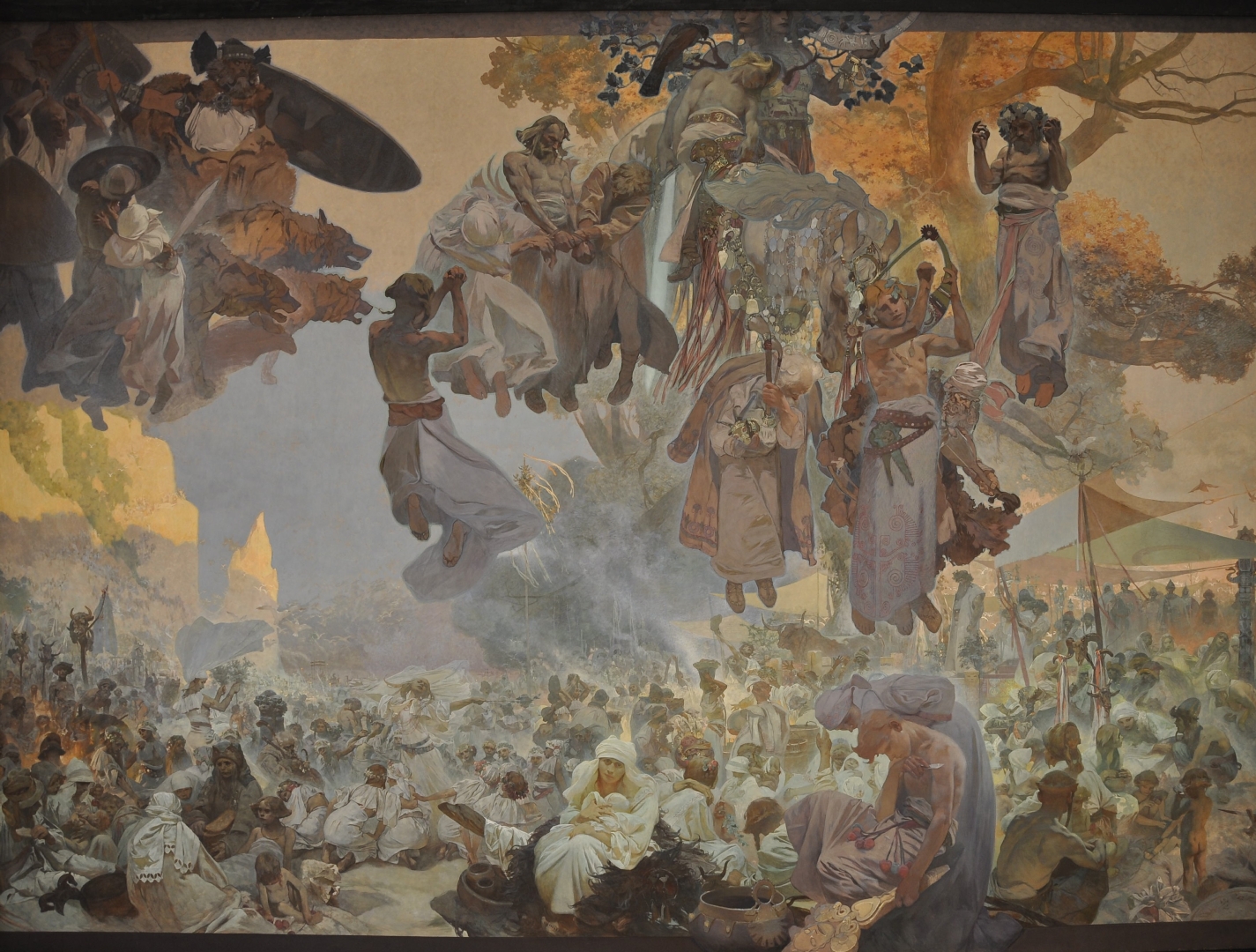THE CELEBRATION OF SVANTOVIT ON RÜGEN
In the 7th century, during the Migration Period, the Slavic tribes sought a new homeland due to overcrowding in their original lands. Some settled along the Baltic coast. Among them were the Rani, who founded the capital Arkona on the island of Rugen, located in Germany. Arkona was an important mystical place for the entire Slavic nation at that time. In autumn, celebrations for the god Svantovít took place here, where priests gave thanks for the harvest and foretold the future.
The central motif of the painting captures the autumn celebration in Arkona, depicting a procession of priests leading a bull that will be sacrificed.
Alfons Mucha creates an illusion of a 3D effect in the painting to express the bleak future of the Rani tribe. In 1168, Danish King Valdemar embarked on a crusade against the Baltic Slavs. His army conquered Arkona, demolished the temple, and burned the statue of the god Svantovít. In the upper left corner, the conquest of Arkona is symbolized by the German god of war Wödan, accompanied by sacred wolves. In the middle of the upper part of the painting, two of the four faces of the Slavic god Svantovít can be seen reaching for the sword of the last Slavic warrior dying on a white horse. A group of shackled people symbolizes the Slavic nations subdued by the Germans.
In the lower part of the painting, three groups of figures depict the future of the Baltic Slavs. On the right, a young carpenter with a watching mother creates a new god to replace the destroyed statue of Svantovít. In the middle, a mother with a child awaits the last hint of hope, while an old woman on the left symbolizes the demise of the Baltic Slavs.

